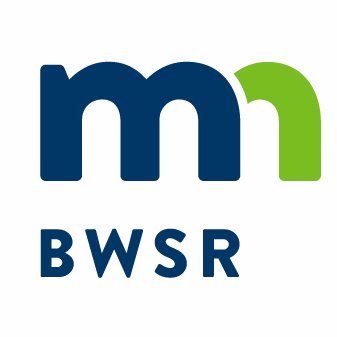St. Paul, Minn. – Continuing statewide work to shift local water planning to a more coordinated approach, the Minnesota Board of Water and Soil Resources (BWSR) approved nine new planning grants for the One Watershed, One Plan program. The August 23rd board action allocates up to $2,200,000 in Clean Water Fund grants to fund nine planning projects to address water issues on a watershed basis.
Historically, water resource management has been planned at the county level. County-level planning can pose challenges since water flows according to high and low points on the landscape, not local government boundaries. One Watershed, One Plan aims to align local water planning on watershed boundaries to create prioritized, targeted, and measurable implementation plans. This collaborative approach enables comprehensive water management work on issues like flooding, habitat, water quality, and recreation.
In the One Watershed, One Plan Program, local governments combine information from their existing water plans, data and information from state water agencies, and input from federal agencies, nonprofit organizations, and citizen stakeholders. The resulting plans identify actions that address the largest threats and provide the greatest environmental benefits to high-priority water resources. Key to the process is the partnership between counties, soil and water conservation districts, watershed districts, and other stakeholders to identify and then implement shared priorities and goals.
“One Watershed, One Plan plays a central role in our efforts to accelerate our goals to restore and protect Minnesota’s Waters,” BWSR Executive Director John Jaschke said. “Local governments are responding to the opportunity to come together with their upstream and downstream neighbors, decide what’s most important, and take action for clean water.”
BWSR has divided Minnesota into 63 suggested “planning boundaries,” which are based on major watersheds. The legislature set a participation goal in 2015 of all planning boundaries by the year 2025. So far, the five pilot plans have been approved by the BWSR board and thirteen groups are actively developing plans. These new planning grants bring the number of planning partnerships to 27.
The nine new planning areas are:
- Hawk Creek watershed, which includes parts of Chippewa, Kandiyohi, and Renville counties.
- Joe River and Two Rivers watershed, which includes parts of Kittson and Roseau counties
- Mississippi River Headwaters watershed, which includes parts of Beltrami, Cass, Clearwater, Hubbard, and Itasca counties.
- Nemadji watershed, which includes parts of Carlton and Pine counties.
- Redeye River watershed, which includes parts of Becker, Otter Tail, Todd, and Wadena counties.
- Rum River watershed, which includes parts of Aitkin, Anoka, Benton, Crow Wing, Isanti, Kanabec Mille Lacs, Morrison, and Sherburne counties.
- Shell Rock River and Winnebago watershed, which includes part of Freeborn County.
- Wild Rice and Marsh River watershed, which includes parts of Becker, Clay, Clearwater, Mahnomen, and Norman counties.
- Zumbro River watershed, which includes parts of Dodge, Goodhue, Olmsted, Rice, and Wabasha counties.
More information about the One Watershed One Plan program, including a map of the participating watersheds, is on BWSR’s website: www.bwsr.state.mn.us.

